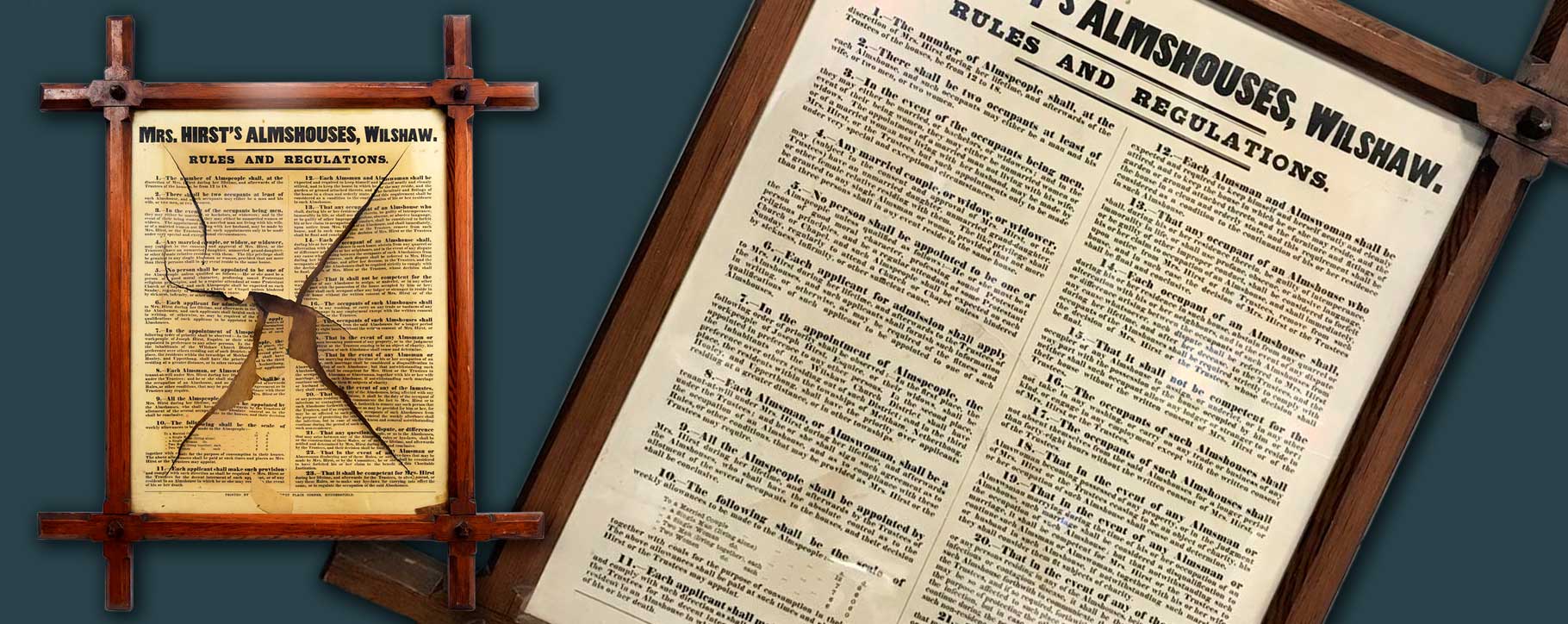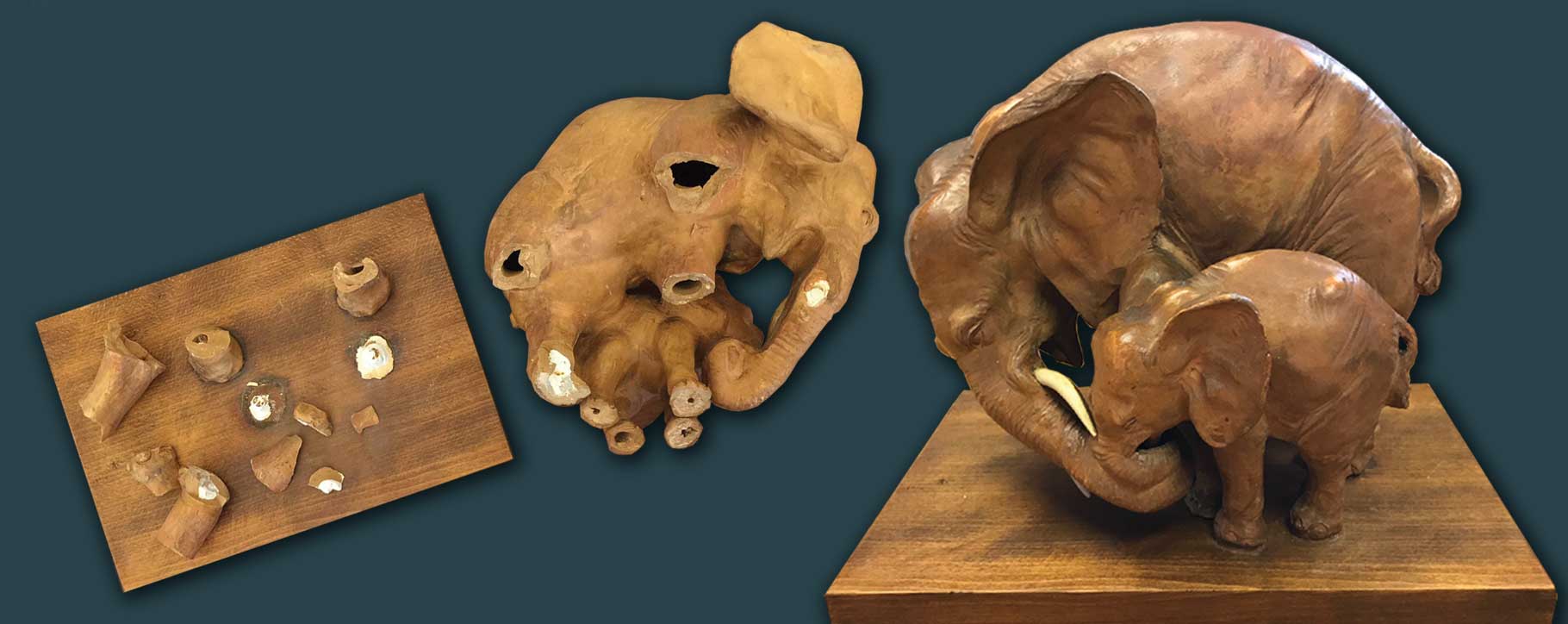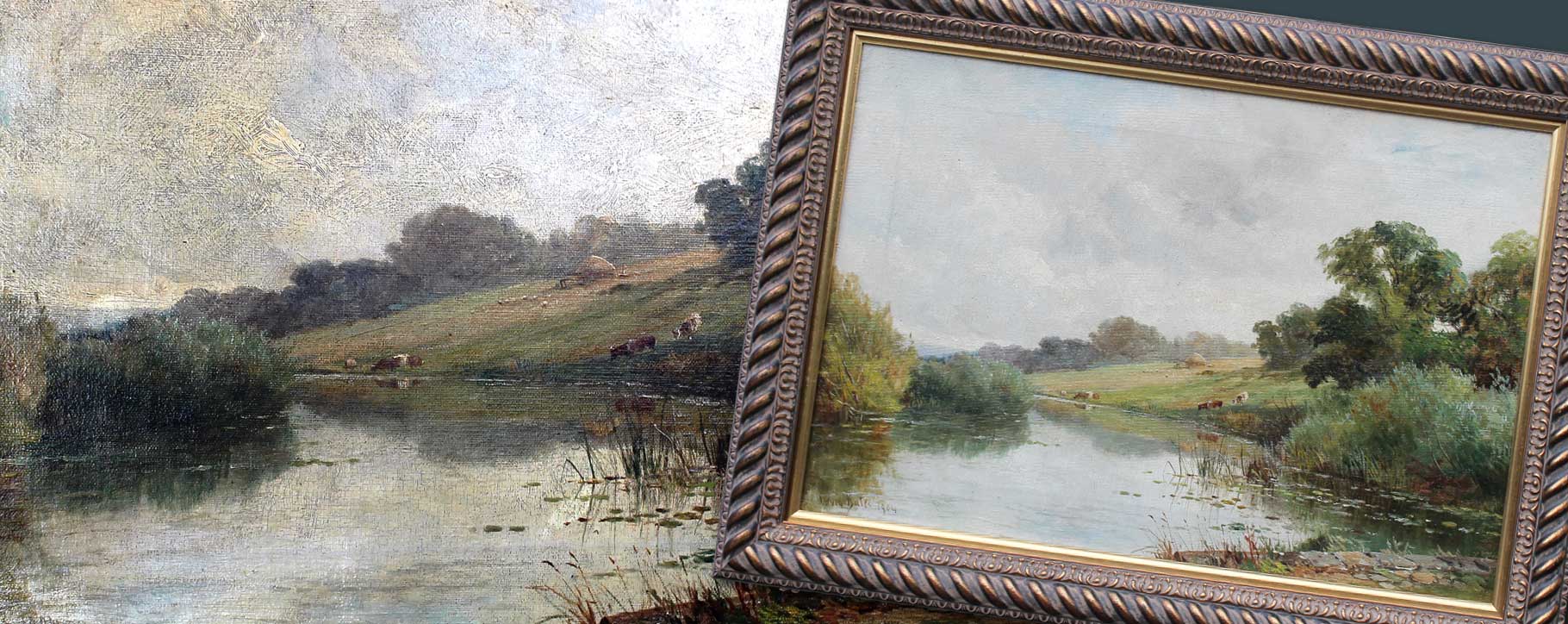Now another year has come to an end, we’ve taken some time to reflect and look back over some interesting – and unique – restoration projects that we completed in 2018. From easel paintings to clay elephants to model aircraft – the breadth of conservation work that we carry out in the studio may surprise you. Here’s a quick look at some studio highlights from the past year:
When an oil painting becomes water damaged, deterioration is instant. For an 19th century oil painting we recently restored, the consequences of the water infiltration were extensive and immediately evident. In this case, water touched the painting at some point over the years, and additional damage has required the need for restoration.

Most noticeably, the surface of the painting had discoloured. In place of a vibrant blue dress, the colour changed to a murky white. While a varnish acts as protection for the paint layer, being exposed to water will eventually cause the varnish to be penetrated. The white stains are caused by the reaction of the varnish with the water.
Alongside the extensive water damage, the middle of the painting also had a hole which required repairing. The damage to this painting necessitated multiple treatments: full re-lining, full varnish removal and solvent-based cleaning, consolidation of flaking and lost paint, and a final varnish. As you can see, the finished result is a sympathetically restored painting, reviving the vibrancy of the original piece.
For a more in-depth look at this restoration, see: Restoring a Water Damaged Oil Painting
As part of a multi-disciplined restoration, we began work on a fascinating item. Mrs Hirst’s Almshouses Rules and Regulations, drawn up on delicate paper and framed had torn in multiple places and the glass covering had been smashed.

Our paper conservator cleaned and re-lined the document and filled the missing areas with liquid paper pulp. The result is a seamless finish and has ensured that the document is well preserved as an item of local historical interest.
After an accident, while moving paintings in a busy office, we were contacted to provide advice for a broken clay statue of African elephants. The elephants were knocked over, and all of the feet and a tusk were snapped off on impact. Our client gathered as many of the broken pieces as possible so they could be re-attached, and for any missing pieces, they were carefully remoulded. The ivory tusk was never found so a synthetic replication was created.

We were happy to return the statue upon completion when the elephants were able to stand on their own four feet once more. For a more in-depth look at this restoration, see: The Clay Elephant in the Room
Another unique restoration landed safely in the studio in the form of a model aircraft. The plane is a Dakota DC3 (common in the 1940/50s), and you can see where the wing’s aileron – French for ‘little wing’ or ‘fin’ – has fallen off.

We sourced the missing part in order to fully secure the aileron back in place and allow the aircraft to take to the skies once more.
When Ian McDonnell bought a David Bates landscape at auction, he knew it was dirty and would need restoration, but that didn’t trouble him. Firstly, he had every confidence that the oil painting could be brought back to its former glory. However, the painting – signed and dated 1904 – had a particular sentimentality about it. Bates (1840 – 1921) was an open-air rural landscape artist painting in the Midlands, and his works are currently on display in Worcester City Art Gallery.

Having lived in Worcestershire, many of Bates’ paintings depict the landscape of Malvern and Colwall to the south-west of Worcester; the area where Ian’s great grandmother grew up in the 1840s. “She may have run across that very field!” commented Ian, who explained that a handwritten note on the reverse suggests it was painted close to Hafford Mill. “Although most of the 19th-century flour mills no longer exist, research has led me to one particular brook and site, based on the shape of the pond,” he added.
If you have an item in need of restoration, please contact us to see how we can help.






